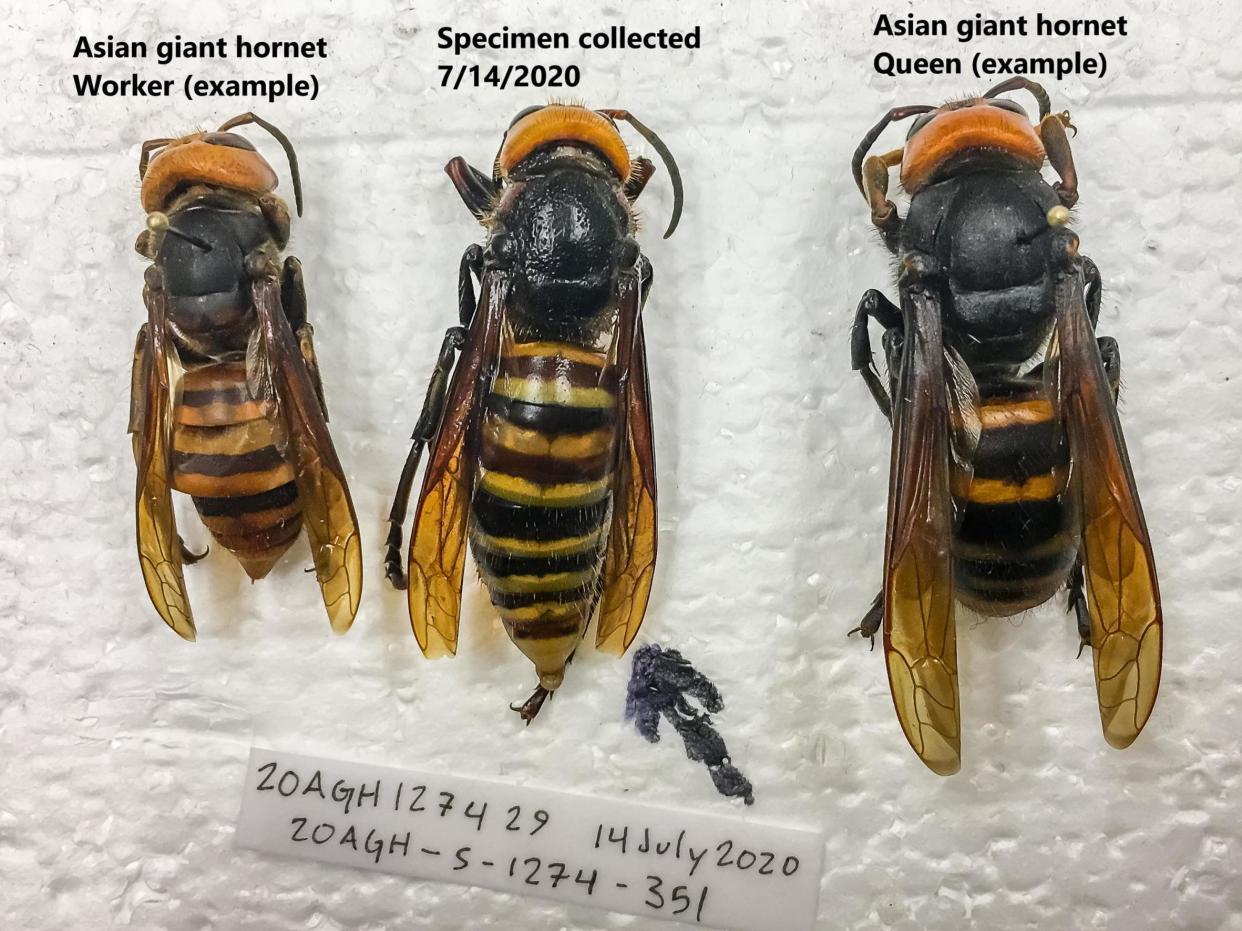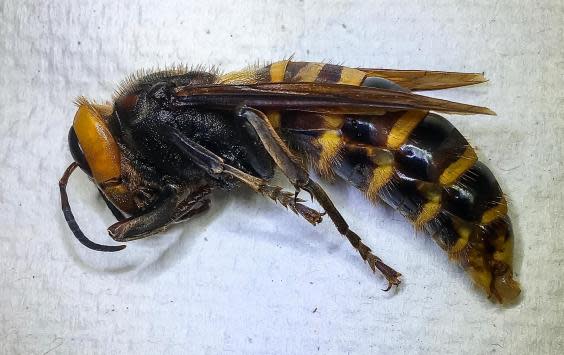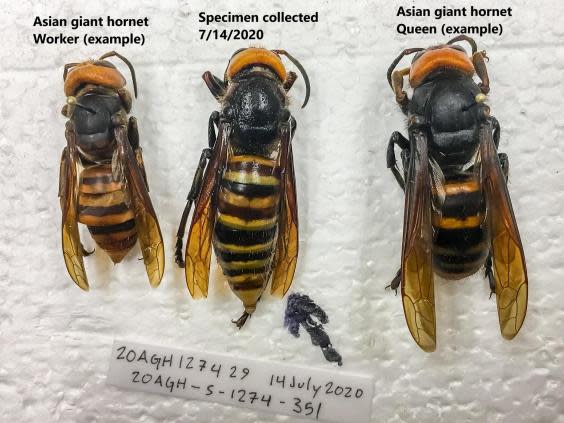‘Murder hornets’ trapped in US for first time as officials race to eradicate colonies before breeding season

As the US grapples with the world's worst coronavirus outbreak, a new threat is emerging as Asian giant hornets – known as “murder hornets” due to their lethal sting to humans – are gaining a foothold in the country.
After they were first found in Washington State in May this year, the 2-inch (5cm)-long hornets have now been trapped for the first time – giving officials an indication – firstly that their traps work, and secondly of where nests could be situated.
Now authorities in Washington State have until mid-September to try and eradicate the invasive species before the breeding season begins.
Multiple stings are deadly to humans and in Asia the hornets are estimated to kill 50 people a year.
During the hornet’s “slaughter phase” they kill bees, feeding the bodies to their young.
Honey bee populations in the US have declined by 60 per cent since the mid 20th century, largely due to habitat loss and use of pesticides, according to Greenpeace USA.
It is not known how the species arrived in North America, but they were first documented late last year, and since then there have been four more sightings – all of the insects in the wild.
Normally Asian giant hornets live in the forests and mountains of south and southeast Asian countries.
This is the first time one of the hornets has been successfully trapped in the US.
Washington State Department for Agriculture workers found the hornet on 14 July in a bottle trap set north of Seattle near the Canadian border, and state entomologists confirmed its identity on Wednesday 29 July.
“This is encouraging because it means we know that the traps work,” Sven Spichiger, managing entomologist for the department said in a press statement.
“But it also means we have work to do.”

WSDA said its next steps are to search for nests using infrared cameras and place additional traps in order to catch live Asian giant hornet specimens.
Special traps intended to trap hornets but keep them alive will be used. If they catch live hornets, the department will attempt to tag and track them back to their colony. Once located, the agency will eradicate the colony.
Officials said they hope to find and destroy the nest by mid-September before the colony would begin creating new reproducing queens and drones. Until that time, the colony will only contain the queen and worker hornets.
“Destroying the nest before new queens emerge and mate will prevent the spread of this invasive pest,” the department said.

In addition to the traps that WSDA has set to catch Asian giant hornets, citizen scientists and other cooperators have reportedly set over 1,300 traps aimed at capturing hornet specimens.
The WSDA website contains guidance for those wishing to help trap the hornets.
Read more
What are ‘murder hornets’ and have they been found in the UK?
Murder Hornet: What it’s like to be stung by the Asian insect
Scientists hunt down ‘murder hornets’ amid fears for bee population
Asian hornet invasion spreads to northern Germany

